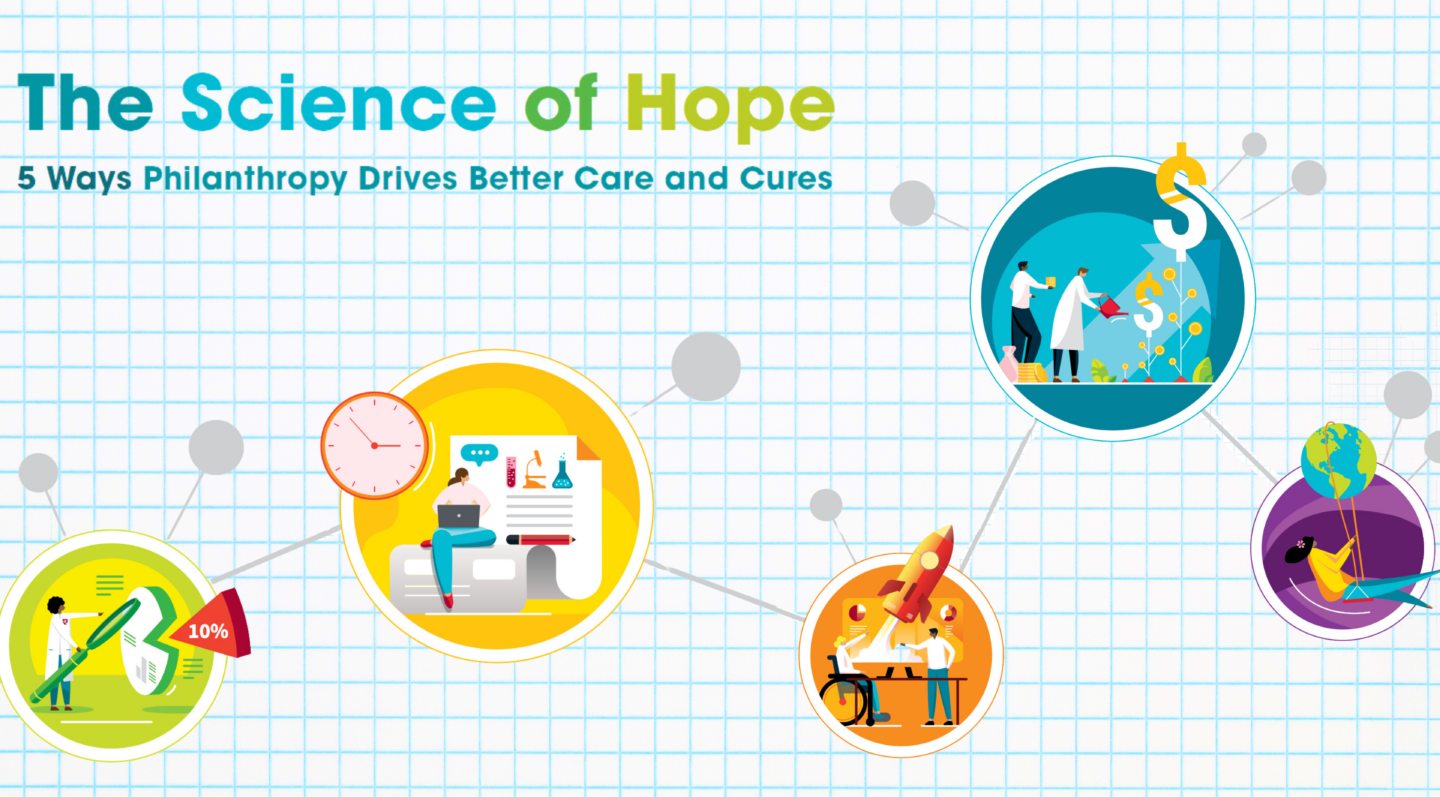Millions of children suffer from serious health challenges such as cancer, congenital heart disease, and prematurity—and each one of them deserves the best possible treatment with the fewest side effects. For these kids, research is hope—and philanthropy is the key to unlocking promising discoveries. Here’s how…
1. It gives childhood diseases the attention they deserve.
- Federal funding for pediatric research is scant and diminishing.
- Only 10% of dollars from the National Institutes of Health (NIH), the worldʼs largest public funder of biomedical research, is awarded to pediatrics.
2. It frees up scientists to do science, not write grant proposals.
- Brilliant scientists spend up to 50% of their time writing grant proposals—and must apply to an average of 5-6 NIH grants to get just one.
“Science is dynamic, you have to respond to what you learn. If you had to write a new grant every time you had a new idea or insight, nothing would ever get done. Philanthropy is not just important, it is necessary for creative, innovative work.” – Michelle Monje, MD, PhD
3. It provides rocket fuel for big ideas with life-changing potential.
- NIH funding is conservative—favoring safe bets that move science and medicine only incrementally. Philanthropy can launch high-risk, high-reward projects, foster collaboration across disciplines, and speed the proof-of-concept cycle for breakthrough ideas.
4. Even small donations have big ROI.
- A gift of $25 to the Childrenʼs Fund— pooled with gifts from other donors— can fuel a pilot grant from Stanfordʼs Maternal and Child Health Research Institute (MCHRI).
- This seed funding enables researchers to test inventive ideas and generate evidence to compete successfully for NIH grants.
- Every dollar provides leverage to secure additional funding—averaging 538% ROI and bringing discoveries to the patients who need them.
5. It makes a lifelong impact for kids.
- When it comes to medical research, there is no better investment than kids—they are pure potential. Advances in prevention, diagnosis, treatment, and cures can have a lifelong impact and transform health for all children.
This article originally appeared in the Fall 2023 issue of Packard Children’s News.

